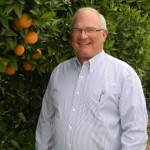Family Citrus Farmers Face Tough Times [Opinion]
Didn’t somebody once say “It is the best of times and it is the worst of times”? That statement is certainly apt today given what is happening in the California citrus industry and California agriculture in general.
Our industry continues to be fixated on a bug, the Asian citrus psyllid (ACP), and a disease, Huanglongbing (HLB), which threaten an iconic California industry. We sit, stunned, watching and hearing what is taking place in Florida, Texas, Mexico, and Brazil. The disease spreads and production losses are staggering.
Meanwhile in the Golden State, the bug exists and unfortunately the disease has been found in some urban areas in Southern California. The industry has reduced ACP detections even as HLB finds in backyards increase. So is our program working or not?
For eight years we have had the vector, but no HLB in commercial groves. We continue to have the cooperation of homeowners, and trees with confirmed HLB are immediately pulled. So one could argue the program is working, as we are finding those needles in numerous haystacks. Plus, we are accomplishing something, to date, that has not been done in other production areas, and that is find HLB before it finds commercial citrus.
That battle is now a $25 to $30 million partnership among industry, homeowners, and state and federal departments of agriculture. It is unprecedented and a proud case study on how the private sector and government can work together.
This Season’s Outlook
That war will wage on for a few more years until or unless a cure is found. Meanwhile the industry continues to produce the largest fresh citrus crop in the nation. Preliminary numbers for the 2017-2018 season indicate a relatively small crop, similar to that harvested and shipped last year for navel oranges, lemons, grapefruit, and mandarin fruit. After several years of high volume, the trees just may be a bit tired, and during bloom our significant rain totals could have affected blossom count.
That being said, exterior quality looks good and one would think with all the 100ºF degree days, flavor will be outstanding. As of this writing, it is simply too early to tell fruit size. The heat minimizes the ability of the tree to create size but one or two good rains in early fall and sizes will increase significantly. Prognosticators now estimate that the industry will be picking navel oranges by the second week of October and mandarins a bit earlier.
What Does the Future Hold?
Industry conversation today speaks to who will be left to produce fruit given the outside pressures affecting the business of farming. A litany of acronyms are affecting the time one can actually farm, while creating ancillary expenses that are not always recovered.
For–sale signs are back up and it appears two more packinghouses will shut down. This does not mean acreage will be significantly reduced, but consolidation into fewer hands will result. There is more than one conference call and more than one grower meeting in which the statement is made as to whether the family farmer will continue to exist in California.
Government pressures, competition, activist demands, and customer acquiescence to activists all place a greater burden on the individual producer. Mother Nature is the easiest component of farming today. And as producers and marketers attempt to create revenue to offset the cost, the price at retail reaches a level that volume moving off store shelves is reduced. When that movement is reduced, the retailer/customer begins to look for a product that turns over more quickly and generates profits at a rapid clip. In other words, they buy cheaper product and offer it at a lower price to the consumer.
So as the retailer/customer cites the need for more stringent food safety requirements, audited sustainability practices, subjective fair wage demands, and the like to enhance their position in the marketplace, they create a burden and a cost that is forcing the family farmer to sell. If the price at retail becomes too high and movement is affected, then a retail customer buys from another source. The common denominator is the family farmer can only do so much.
So the choice is rapidly becoming whether to buy fresh produce from a consolidated sourcing area or purchase from an offshore supplier. Some choice!










